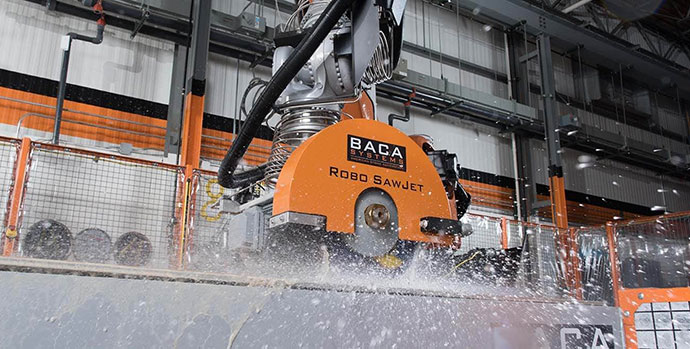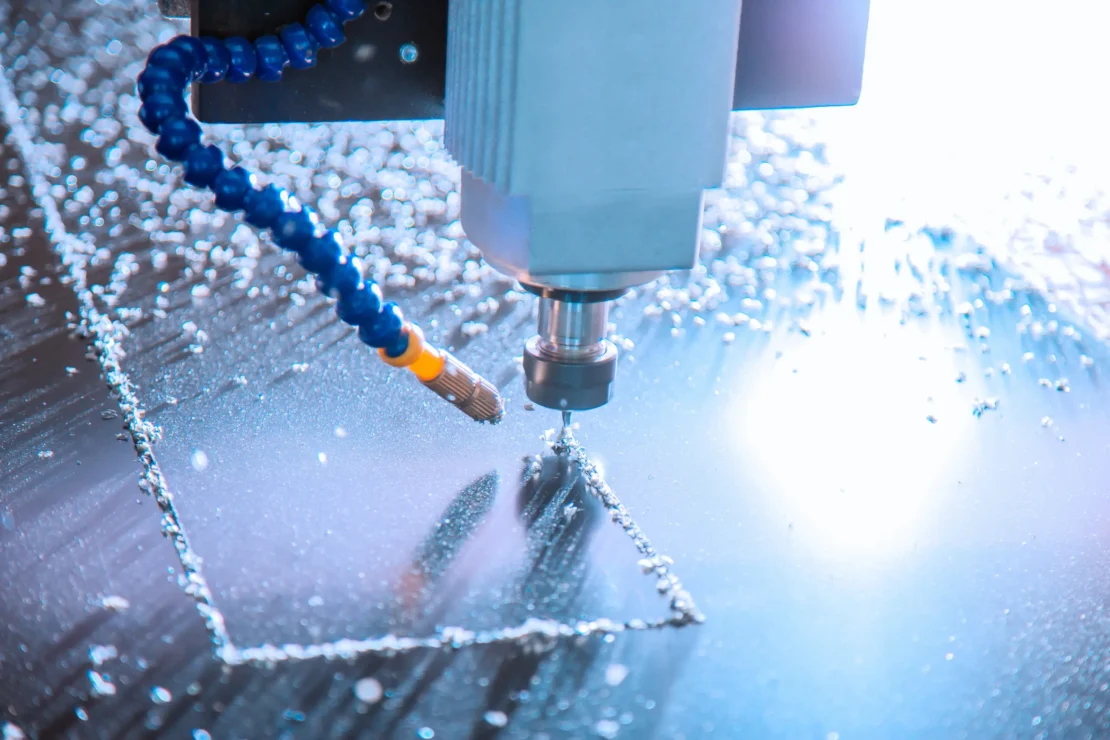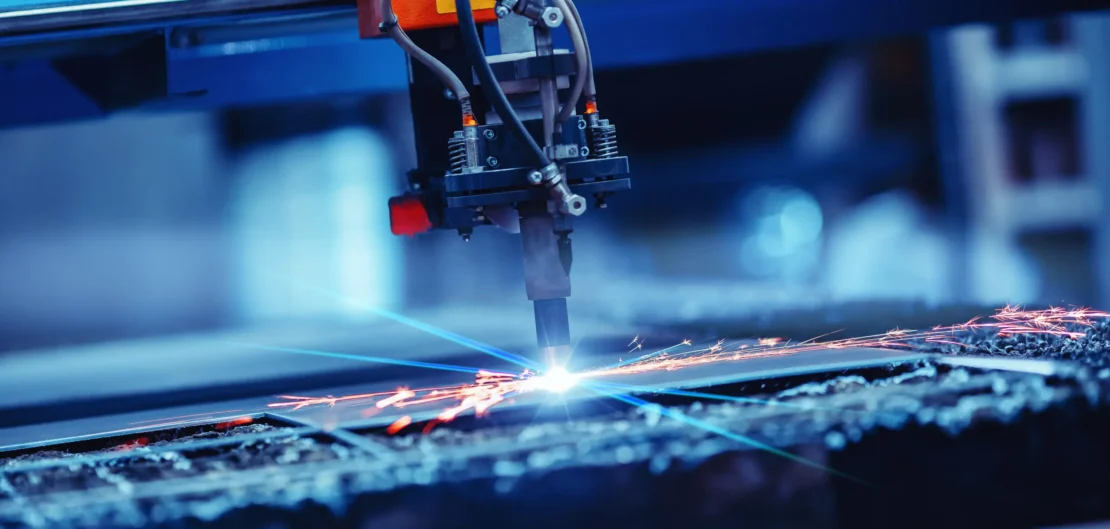
Most standard CNC machines are used to process hardened metals such as steel, stainless steel, steel alloys, and softer metals like aluminum. Granite is extremely hard and abrasive. This means that traditional bits and saws made from high-speed steel or carbide won’t work because they are designed to work with softer materials and will wear out quickly or even break when used on granite.
If you want to use a CNC machine for granite fabrication, you have to find a specialized machine equipped with a diamond blade and a cooling and lubrication system to handle the immense heat generation from stone cutting.
There are many types of granite cutting machines, including CNC saws, sawjets, waterjets, mills and routers, and laser cutting machines. In this article, we’ll cover these machines in detail, including advantages, disadvantages, and common use cases for each.
CNC Saws

CNC saws have been commonly used in the stone and masonry industry since the early 1990s. A CNC saw is the all-important tool for achieving high-precision, computer-controlled cuts on granite. The saw follows a predetermined or pre-programmed cutting route to ensure the highest possible accuracy. Computer-aided design (CAD) software is typically used to program the CNC saw to make the cuts.
Advantages
CNC saws are cost-effective and efficient. They’re known for making fast, highly accurate, and repeatable cuts, which helps to lower costs, reduce material wastage, and reduce turnaround times. They can also produce a high volume of cuts, making them ideal for mass production.
Drawbacks
A CNC granite saw is limited to cuts achieved with a rotating blade, like rip cuts, cross cuts, and miter cuts. Because of this, a saw can struggle with extremely complex shapes and internal cuts.
Common Use
CNC saws are primarily used to cut giant slabs for countertops and tiles.

CNC Sawjets
A CNC sawjet is a CNC saw (with a diamond blade) paired with the unique cutting capabilities of a waterjet, which uses a high-pressure combination of water and abrasive particles to cut through the granite. A CNC sawjet can handle the same cuts that a CNC saw can (straight and miter) but can also handle more complicated and tight-angled cuts, including radius cuts, with the waterjet.
Advantages
A CNC sawjet can make cuts that a CNC saw cannot. The waterjet immediately takes over if the primary diamond blade cannot make a specific cut. A sawjet is also extremely fast, intricate, and capable of making high-volume cuts without stopping the machine or repositioning the material.
Drawbacks
A sawjet is typically more expensive than a standard granite CNC saw because these machines combine two different technologies. A sawjet also requires water, increasing operational complexity and costs.
Common Use
A CNC sawjet is typically used to cut stone slabs and to create intricate elements within the stone.

CNC Waterjets
As mentioned in the last section, a CNC waterjet uses a combination of high-pressure water and different abrasive substances/particles like garnet, silicon carbide, or aluminum oxide to make a wide range of cuts. The primary difference between the waterjet and the sawjet is that there is no saw blade—all cuts are made using high-pressure water and abrasive materials.
Advantages
Generally, waterjets can make fast, high-volume, accurate cuts on material thicknesses up to 12 inches. While material thicknesses beyond 12 inches can still be cut, the speed at which those cuts can be made does diminish.
CNC waterjets are also ideal solutions for engraving or inserting inlays. Unlike other processes that can generate high heat during machining, a CNC waterjet is a cold-cutting process that produces no heat. Too much heat can often cause premature micro-fissures or cracks in granite, leaving noticeable, unappealing burn/heat marks on the surface. Neither of these issues is a concern with a waterjet.
Lastly, a CNC waterjet doesn’t create dust or residue during cutting, as the water captures all the residue. The water reduces dust particles and can be reused in the process.
Drawbacks
One of the drawbacks of CNC waterjets is that their speed and accuracy can diminish when cutting thicker materials. They also generate considerable noise and can easily break or deform granite and other stone if it is too thin. Waterjets are also slower than saws at making straight cuts, so they’re not the most economical solution if the primary application is to produce stone slabs. Lastly, waterjets require effective water management and recycling systems, which can be expensive and take up a lot of shop space.
Common Use
Waterjets are primarily used for producing artistic, custom designs in stone and other hard materials.
Stone CNC Mills & Routers

A CNC granite router holds a large volume of material on a flatbed/worktable while using a separate spindle and drive system above the table to mill, drill, engrave, or cut material.
Advantages
Routers can make fast, highly accurate, and repeatable cuts across a large material area. They’re also versatile, as they’re excellent for carving, engraving, and 3D shaping and can perform many tasks, like drilling and edge profiling. Lastly, routers provide high precision in depth and contour control, ensuring minimal material waste.
Drawbacks
Routers and mills are not well-suited for handling cuts on large or thick slabs and are generally slower compared to saws and waterjets. Routers also make a considerable amount of noise and produce a large amount of dust and debris.
Common Use
In granite and other stone fabrication operations, routers are better suited for detailed work, like creating reliefs.

CNC Laser Cutting Machine
A CNC laser cutting machine uses a high-powered focalized laser to etch, mark, engrave, and cut granite.
Advantages
CNC laser cutting machines can produce high-precision cuts at high speeds for thin materials. They’re ideal for cutting intricate designs and creating finished parts with unique geometries. Lastly, these machines produce clean cuts with minimal material waste.
Drawbacks
While laser-cutting CNC machines can produce pinpoint, accurate cuts, they are limited by the thickness of the material. Laser cutting machines also cannot cut highly reflective materials.
Additionally, most CNC laser machines generate heat, which may degrade granite by leaving surface burn marks, and some machines can even produce noxious fumes and consume a high amount of energy, making them expensive to operate.
Common Use
Laser cutting machines are primarily used to create intricate designs on thin granite slabs.
Turn to BACA Systems for High-Quality CNC Stone Cutting Machines
Founded in 2014, BACA Systems is an innovator, designer, and manufacturer of high-quality stone fabrication equipment, including CNC saws, sawjets, and milling machines. Our machines have small footprints and are designed with efficiency and reliability in mind. We also provide replacement parts and exceptional remote support to keep your shop running.
Contact us today to learn more about our equipment, or see our equipment in person by taking advantage of our Fly to Detroit opportunity. Whether we speak to you online or in person, we look forward to helping you improve productivity and reduce operational costs!
